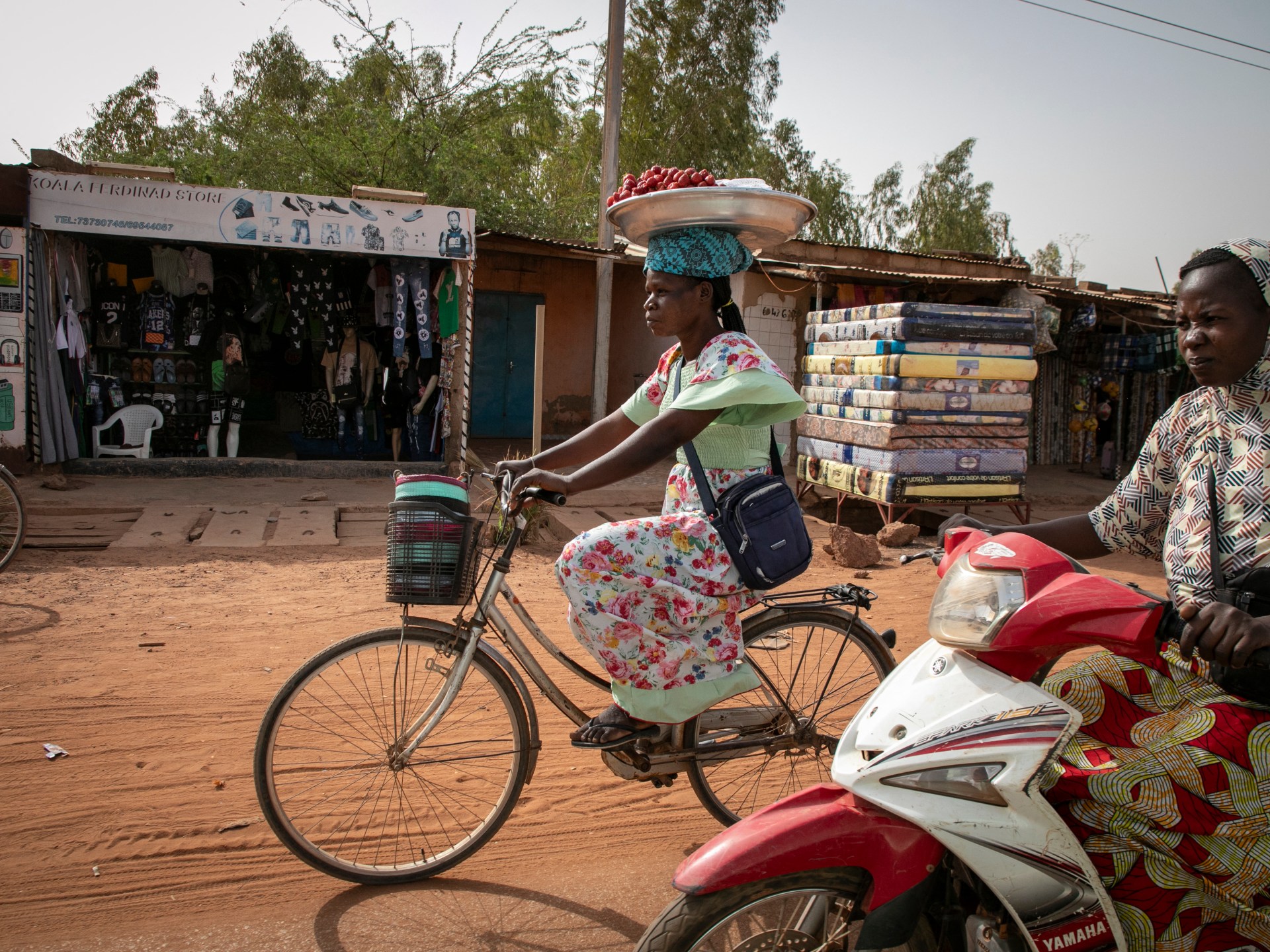Deadly Sahel heatwave caused by ‘human-induced’ climate change: Study
Deadly Sahel heatwave caused by ‘human-induced’ climate change: Study Al Jazeera English


Extreme Heatwave in West Africa’s Sahel Region

Mali and Burkina Faso recorded most extreme heat in what scientists called a once-in-a-200-year occurrence.
Human-caused climate change contributed to an unusually intense and lethal hot spell throughout West Africa’s Sahel region in April, according to a study by World Weather Attribution (WWA), an international network of scientists focusing on extreme weather events.
The heatwave caused temperatures in Mali and Burkina Faso to climb to more than 45 degrees Celsius (113 degrees Fahrenheit) between April 1 and April 5, an unusual spike for the season that likely led to numerous deaths, said the study published on Thursday.
The extreme weather also coincided with the Muslim fasting month of Ramadan and frequent power cuts, heightening the risk of heat-related casualties.
“Even minimum temperatures, overnight, remained relatively high, making it so that people did not get a break from the heat,” the study added.
‘Human-induced’ Climate Change
The WWA’s observations and climate models found that “heatwaves with the magnitude observed in March and April 2024 in the region would have been impossible to occur without the global warming of 1.2C to date”, which it linked to “human-induced climate change”.
Although the Sahel is accustomed to bouts of heat during this time of year, the extreme hot spell in April would have been 1.4C cooler “if humans had not warmed the planet by burning fossil fuels” such as coal and other activities such as deforestation.
The study noted that the five days of extreme heat was a once-in-a-200-year event.
But it warned that “these trends will continue with future warming”.
Recommendations
- The WWA recommended that countries formulate heat action plans that would warn citizens when extreme temperatures are imminent and offer guidance on how to prevent overheating.
- It additionally called for strengthening critical infrastructure such as electricity, water, and healthcare systems to adapt to the increasing frequency and intensity of extreme heat.
Impact on Mali and Burkina Faso
The length and severity of the extreme heat led to a stark increase in the number of deaths and hospitalizations in Mali and Burkina Faso, the WWA said.
In the Gabriel Toure hospital in Bamako, the capital of Mali, more than 100 deaths were reported between April 1 and 4, compared with 130 deaths for the entire month of March.
A lack of data in the affected countries makes it impossible to precisely estimate the number of heat-related deaths, said the WWA, adding there were likely hundreds, if not thousands, of other heat-related casualties.
The scientists said that rapid urbanization and loss of green spaces in cities such as Bamako and Ouagadougou, the capital of Burkina Faso, have increased the urban heat island effect, which makes parts of cities significantly warmer than others.
Sustainable Development Goals (SDGs)
Countries in the Sahel region have had to contend with drought since the 1970s, as well as periods of intense rainfall from the 1990s.
The dwindling availability of water and pasture, compounded by the development of agricultural land, has disrupted the lives of pastoral populations and encouraged the emergence of armed groups that have extended their hold over vast swaths of territory in Mali, Burkina Faso, and Niger.
SDGs, Targets, and Indicators
| SDGs | Targets | Indicators |
|---|---|---|
| SDG 13: Climate Action | Target 13.1: Strengthen resilience and adaptive capacity to climate-related hazards and natural disasters | Indicator: Number of deaths and hospitalizations due to extreme heat events |
| SDG 11: Sustainable Cities and Communities | Target 11.2: By 2030, provide access to safe, affordable, accessible, and sustainable transport systems for all | Indicator: Impact of urban heat island effect on cities |
| SDG 6: Clean Water and Sanitation | Target 6.4: By 2030, substantially increase water-use efficiency across all sectors and ensure sustainable withdrawals and supply of freshwater to address water scarcity | Indicator: Dwindling availability of water in the Sahel region |
| SDG 15: Life on Land | Target 15.3: By 2030, combat desertification, restore degraded land and soil, including land affected by desertification, drought, and floods, and strive to achieve a land degradation-neutral world | Indicator: Impact of agricultural land development on water and pasture availability |
1. Which SDGs are addressed or connected to the issues highlighted in the article?
SDG 13: Climate Action
The article discusses the extreme heatwave in West Africa’s Sahel region and attributes it to human-induced climate change. This connects to SDG 13, which focuses on taking urgent action to combat climate change and its impacts.
SDG 11: Sustainable Cities and Communities
The article mentions the urban heat island effect in cities like Bamako and Ouagadougou, which makes certain parts significantly warmer than others. This relates to SDG 11, which aims to make cities inclusive, safe, resilient, and sustainable.
SDG 6: Clean Water and Sanitation
The article briefly mentions the dwindling availability of water in the Sahel region, which has disrupted the lives of pastoral populations. This aligns with SDG 6, which focuses on ensuring availability and sustainable management of water and sanitation for all.
SDG 15: Life on Land
The article highlights how agricultural land development has impacted water and pasture availability in the Sahel region. This relates to SDG 15, which aims to protect, restore, and promote sustainable use of terrestrial ecosystems.
2. What specific targets under those SDGs can be identified based on the article’s content?
Target 13.1: Strengthen resilience and adaptive capacity to climate-related hazards and natural disasters
The extreme heatwave in the Sahel region highlights the need to strengthen resilience and adaptive capacity to such climate-related hazards.
Target 11.2: By 2030, provide access to safe, affordable, accessible, and sustainable transport systems for all
The urban heat island effect in cities like Bamako and Ouagadougou emphasizes the importance of providing sustainable transport systems to ensure safe and accessible mobility for all.
Target 6.4: By 2030, substantially increase water-use efficiency across all sectors and ensure sustainable withdrawals and supply of freshwater to address water scarcity
The mention of dwindling water availability in the Sahel region highlights the need to improve water-use efficiency and ensure sustainable withdrawals and supply of freshwater.
Target 15.3: By 2030, combat desertification, restore degraded land and soil, including land affected by desertification, drought, and floods, and strive to achieve a land degradation-neutral world
The impact of agricultural land development on water and pasture availability underscores the importance of combating desertification, restoring degraded land, and achieving a land degradation-neutral world.
3. Are there any indicators mentioned or implied in the article that can be used to measure progress towards the identified targets?
Yes, the article provides indicators that can be used to measure progress towards the identified targets:
– Number of deaths and hospitalizations due to extreme heat events: This indicator can measure progress towards Target 13.1, as it reflects the resilience and adaptive capacity of communities in dealing with climate-related hazards.
– Impact of urban heat island effect on cities: This indicator can measure progress towards Target 11.2, as it assesses the accessibility and sustainability of transport systems in mitigating the urban heat island effect.
– Dwindling availability of water in the Sahel region: This indicator can measure progress towards Target 6.4, as it reflects the efficiency and sustainability of water withdrawals and supply.
– Impact of agricultural land development on water and pasture availability: This indicator can measure progress towards Target 15.3, as it assesses efforts to combat desertification and achieve a land degradation-neutral world.
By monitoring these indicators, progress can be tracked and appropriate actions can be taken to achieve the identified targets under the relevant SDGs.
Behold! This splendid article springs forth from the wellspring of knowledge, shaped by a wondrous proprietary AI technology that delved into a vast ocean of data, illuminating the path towards the Sustainable Development Goals. Remember that all rights are reserved by SDG Investors LLC, empowering us to champion progress together.
Source: aljazeera.com

Join us, as fellow seekers of change, on a transformative journey at https://sdgtalks.ai/welcome, where you can become a member and actively contribute to shaping a brighter future.







